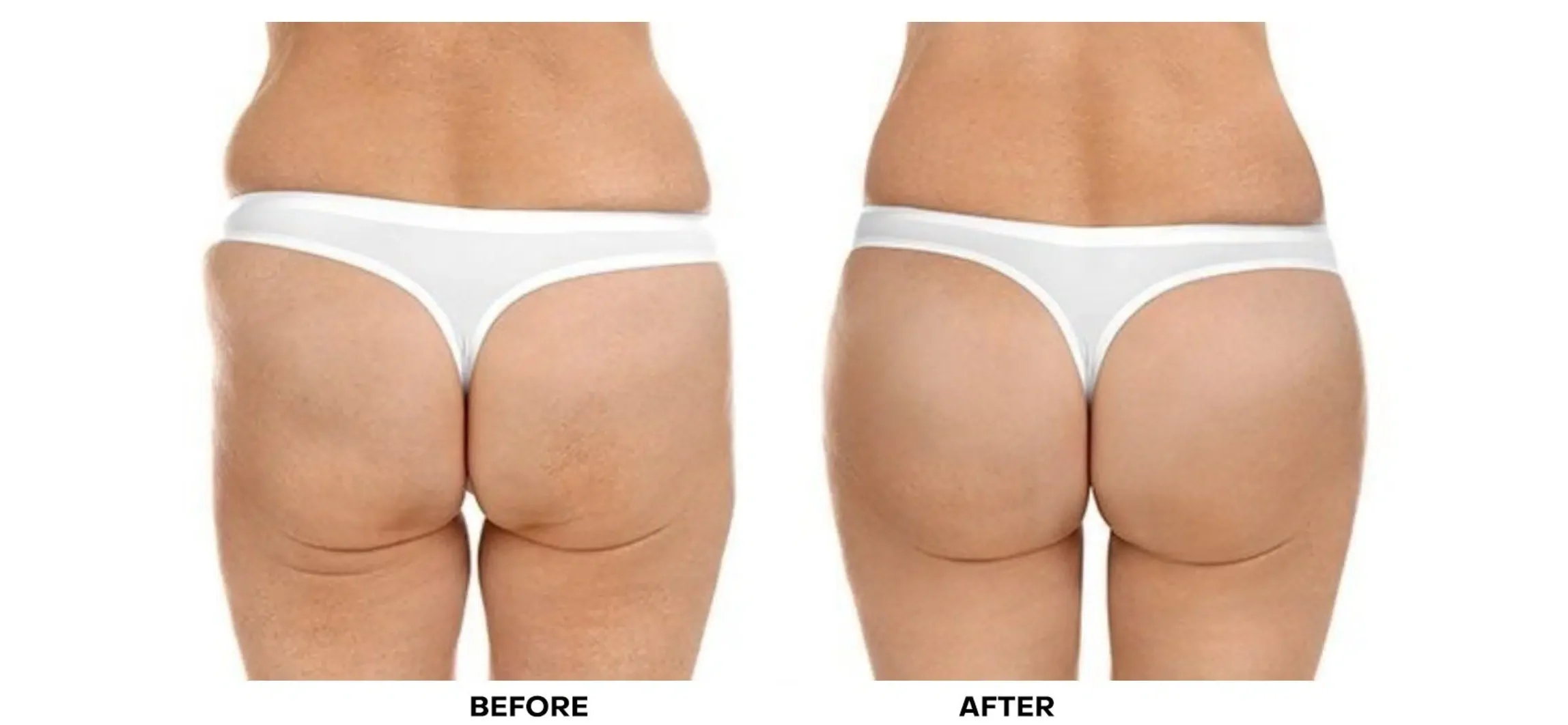
Non-surgical butt lifts usually don’t take long. Most sessions last between 30 and 60 minutes. The exact duration depends on the method. Dermal fillers like Sculptra require injection points to be carefully mapped. Some clinics may use radiofrequency or ultrasound. Each option involves its own timeline. Preparation adds a few minutes. Numbing cream, if used, takes time to activate. Aftercare instructions are brief. Overall, appointments are shorter than surgical consultations.
Sculptra injections are spaced weeks apart for gradual volume and lift
Sculptra isn’t completed in one visit. A series of sessions is required. These sessions are spaced four to six weeks apart. The body responds gradually to the poly-L-lactic acid. Collagen growth is stimulated over time. Early changes are subtle. Full results appear after several months. Each session takes under 45 minutes. Patients return multiple times for touch-ups. Final results depend on how the body responds.
Radiofrequency treatments take 30 to 45 minutes per session per targeted area
Some clinics use radiofrequency for skin tightening. It heats deeper tissues. This encourages collagen and elastin production. Each session typically lasts 30–45 minutes. Time depends on the size of the treatment zone. Buttocks require consistent movement of the applicator. Multiple passes may be needed. Cooling periods might be included. Clinics often recommend 4–6 sessions. These are scheduled weekly or biweekly.
Vacuum therapy involves multiple sessions, each lasting up to 45 minutes
Vacuum therapy uses suction cups on the buttocks. These create pressure that stimulates muscle and blood flow. Each session usually lasts 30 to 45 minutes. Suction is applied in intervals. The skin must be monitored for response. Multiple sessions are required. Clinics may suggest 6 to 12 visits. Sessions are spaced close together. Some patients do it twice a week initially.
Hyaluronic acid fillers may require touch-ups every 6 to 12 months
These fillers are injected to create volume. Results are immediate but temporary. One session lasts 30 to 60 minutes. The number of syringes affects session length. Touch-ups may be needed after 6 months. Some clients return annually. No downtime is needed. Movement should be restricted for a day. The longevity depends on activity level and metabolism.
Most patients resume daily activity immediately after their appointment
Recovery is minimal. No surgical tools are involved. Patients often return to work the same day. Some mild bruising or swelling might occur. Discomfort is manageable without medication. Most aftercare advice focuses on avoiding pressure. Sitting directly on the area is discouraged for 24 hours. Normal physical activity resumes quickly. Clinics provide clear aftercare guidelines.
Results develop gradually depending on the treatment’s mechanism of action
Each technique works differently. Some provide immediate lift. Others take time for collagen remodeling. Radiofrequency and Sculptra are slower. Fillers offer instant change but fade gradually. Vacuum therapy shows early swelling that settles. Patients should not expect a dramatic overnight shift. A natural lift develops over weeks or months. Regular follow-ups help monitor progress.
A full treatment cycle might span several months for optimal results
Though a single session is short, full treatment takes time. Sculptra might involve 3 to 4 sessions. Radiofrequency requires weekly appointments over two months. Vacuum therapy is often performed for 6 weeks straight. Clinics create custom schedules. The full cycle depends on goals and body type. Progress is assessed at intervals. Adjustments are made along the way.
Some treatments require shorter sessions but more frequent appointments
Shorter sessions don’t mean quicker outcomes. Vacuum therapy may take just 30 minutes. But it needs repetition. Three sessions per week may be suggested. Ultrasound-based options are similar. They offer less downtime, but more appointments. Each visit builds on the last. Skipping sessions delays results. Commitment is required for visible improvement.
Touch-up sessions every few months help maintain the lifted appearance
Results aren’t permanent. Maintenance is necessary. Some patients book quarterly touch-ups. Others come annually. The frequency depends on the technique. Fillers need replenishment as they dissolve. Collagen-stimulating treatments may extend effects with occasional boosts. Follow-up sessions are often shorter. Clinics track progress and adjust plans. Consistency supports long-term enhancement.
Individual body response affects both treatment time and visible outcomes
No two bodies respond alike. Collagen production varies by age. Metabolism changes filler absorption speed. Skin thickness alters radiofrequency effectiveness. Muscle tone influences vacuum response. These factors shape both session time and results. What works fast for one might take longer for another. Practitioners tailor the plan accordingly. Patience is important for real progress.
Practitioner experience influences the time efficiency of each appointment
Experienced professionals work with precision. They map injection sites efficiently. Fewer errors mean faster sessions. Inexperienced hands may need more time. They might make corrections mid-session. Consistency in technique ensures smoother treatments. Familiarity with body structure also helps. Clients should check qualifications. Time savings often reflect deeper skill.
Some clinics combine multiple techniques to reduce total appointment count
Combination therapy shortens overall timeline. Sculptra may be used with vacuum therapy. Radiofrequency might follow filler injections. The blend enhances results. Fewer total sessions are needed. Time per appointment may increase slightly. But the total treatment window shrinks. This strategy maximizes efficiency. Clinics offering it may charge more. Patients must ask about compatibility.
Results usually peak weeks after the final session, not immediately afterward
The final session doesn’t mark the peak. Collagen keeps developing. Radiofrequency continues to tighten skin post-treatment. Sculptra gains strength over 3 months. Hyaluronic acid settles after swelling fades. Patience is required after completion. Photos might not reflect the final shape right away. Most clinics schedule follow-ups to assess change. Full benefits unfold over time.
External factors like exercise and diet can influence duration and results
A healthy lifestyle enhances outcomes. Exercise improves muscle tone beneath treated areas. Nutrition supports collagen health. Dehydration reduces filler longevity. Excessive pressure flattens gains. Wearing supportive clothing helps. Following clinic advice improves duration. Skipping these steps shortens results. Internal and external habits work together. Consistency matters post-treatment.
The first consultation helps determine how long your treatment plan will take
Consultation starts the process. Doctors assess skin, fat, and goals. They recommend suitable methods. Timelines are discussed. Clients learn about each step. Preparation begins from this point. Some may need fewer sessions. Others require a full schedule. Timelines vary widely. Accurate planning happens during this visit. It sets realistic expectations.
Not all methods are suitable for every body type or desired result
Each body has limits. Skin elasticity differs between individuals. Some respond better to certain methods. Others show minimal change. Volume goals shape technique choice. Fillers suit modest increases. Larger lifts need Sculptra or repeated therapy. Practitioner guidance ensures compatibility. Misaligned choices waste time. Proper pairing enhances efficiency.
Quick sessions don’t always mean faster visible transformation
Time in the chair isn’t everything. Some changes build slowly. Even with fast sessions, visible transformation lags. Sculptra needs weeks to stimulate collagen. Vacuum lifts may appear fast but fade. Fillers swell initially then settle. Judging results too soon misleads. Final shape takes patience. Short sessions may need more total time.
Long-lasting results come from full cycles followed by maintenance, not single visits
One visit offers minimal change. True lift develops over a cycle. Maintenance extends this benefit. Stopping after one session limits outcome. Skipping care reverses progress. Clinics stress follow-through. Many clients return seasonally. Plans are designed to build over time. Lasting results require consistent effort.
